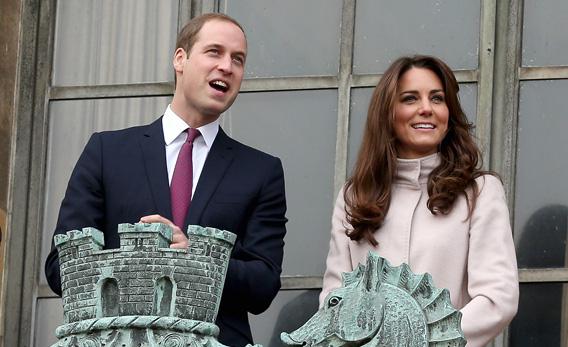Kate Middleton, now known as the Duchess of Cambridge, is pregnant. Upon the baby’s birth, he or she will be third in line to the British throne, behind Princes Charles and William. Speculation has already begun about the child’s name, which will likely be something traditional, in part because historians will look back on the name for centuries. Is the baby stuck with whatever name William and Kate pick?
No. The name by which a king or queen identifies is called the “regnal name,” and it need not be his or her birth name. Over the past two centuries, it has become increasingly common for British monarchs to drop their first names upon coronation. Queen Victoria, for example, used her middle name as her regnal name when she ascended to the throne in 1837, rather than Alexandrina, her first name. There was little controversy to the choice: Her family had called her Victoria since childhood.
The controlling Victoria named her first son Albert after her husband, Albert of Saxe-Coburg and Gotha. She also declared her wish that every successive monarch take either Albert or Victoria for a regnal name. When Albert had a son, Queen Victoria demanded that he be named Albert Victor and that he include both names in his regnal name. Although Albert Victor’s parents called him Eddy, the Queen insisted on using his birth name. (He died before his father and never ascended the throne.)
Victoria’s demands backfired. Her son rebelled upon his ascension to the throne and took his middle name as his regnal name, becoming Edward VII. Edward’s second son, George V, dropped the remnants of Prince Albert’s name from the family records and changed the name of the royal house from Saxe-Coburg-Gotha to Windsor when British sentiment turned against Germany around the time of World War I. George V’s son Albert also decided not to use his birth name when he became King George VI in 1936.*
The prerogative to choose a regnal name extends beyond England. King Robert III took his father’s name when he assumed the Scottish throne in 1390 rather than his first name, John. (The last King John of Scotland, John Balliol, presided over a disastrous reign, and his successors avoided any connection to him.) The papal name is a form of regnal name, with many popes over the past millennium choosing names for symbolic reasons.
Got a question about today’s news? Ask the Explainer.
Correction, Dec. 4, 2012: This article originally identified King George VI as the brother of George V. (Return to the corrected sentence.)
